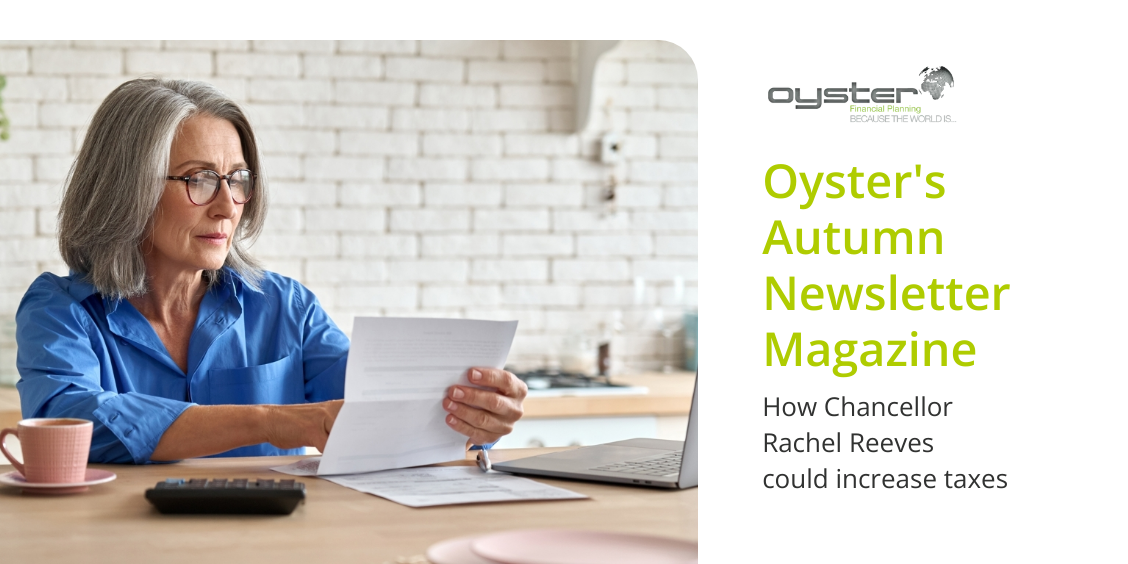Oyster’s Guide to Tax Year End Planning
As we approach the end of the tax year on 5 April 2024, it presents an ideal opportunity to assess the various allowances and reliefs available for your benefit. Allocating time for this review can provide valuable insight into potential opportunities for you and your family.
Welcome to our guide.
Understanding your tax affairs is key to maximising your wealth and ensuring your financial future.
The 5 April 2024 marks the end of your personal earnings year so knowing your yearly income will help you understand your tax band and ensure you take advantage of potential reliefs or allowances.
As the tax year-end approaches, we’ve provided some planning tips to consider:
Marriage Allowance
This allowance provides a unique opportunity for couples where one partner is a basic rate taxpayer, and the other partner’s income falls below the personal allowance threshold. With the Marriage Allowance, you can transfer up to £1,260, which equates to 10% of the personal allowance from the lower-income partner to the higher-income partner.
It’s important to note that this allowance is specifically designed for married couples or registered civil partners. You can backdate up to four years if you were eligible in those years; the earliest of the four years (for example, at the time of writing 2019/20) must be applied for before the tax year-end.
Individual Savings Account (ISA)
You receive an ISA allowance of £20,000 in the current tax year. Contributions can be allocated to a Cash ISA, Stocks & Shares ISA, Lifetime ISA or Innovative Finance ISA. ISAs are a ‘tax-efficient wrapper’ which can make a big difference to your money over time. You can both use your ISA allowances for married couples, enabling you to put up to £40,000 in ISAs between you.
Junior ISA (JISA)
Children are entitled to a Junior ISA (JISA) allowance of £9,000 per annum. Consider funding a JISA to give your children a nest egg when they turn 18.
Pension Contributions
Pension contributions should be a key consideration at the end of each tax year. Contributions to pension schemes can be made on behalf of your minor and adult children and your grandchildren. There are several advantages to doing so. For example, the pension scheme can reclaim basic rate tax from HM Revenue & Customs (HMRC). You’ll receive additional tax relief if you’re subject to a higher tax rate exceeding 20%.
The annual tax-efficient pension contribution limit is now the lesser of your relevant earnings or an annual allowance of £60,000 gross (less employer contributions and plus any carry forward), corresponding to a net payment of £48,000.
‘Pension Carry Forward’ Rules
The ‘Carry Forward’ rules allow you to carry forward unused allowances from the previous three tax years as long as you had a pension plan in place in those years. As we reach this tax year end, you’ll lose any unused allowance for the 2020/21 tax year if it remains untapped.
Capital Gains Tax Allowance
Before 6 April 2024, you have an opportunity to solidify your capital gains and make the most of the annual CGT exemption, which is capped at £6,000. This reduced t0 £3,000 from the 2024/25 tax year.
ARE YOU AND YOUR FAMILY TAKING ADVANTAGE OF TAX PLANNING OPPORTUNITIES?
This guide provides a general overview of just some of the key issues. Obtaining professional advice is essential to understand the best course of action for your specific circumstances.
For further information on tax year-end planning opportunities, please get in touch with us. We’re here to help you make the most of your money.
Oyster Financial Planning based in Hythe village.





![Welcome to our latest issue. Inside, we explore a new study that reveals a startling insight. As many as one in six (15%) individuals with a partner are unclear about who will receive their pension savings if they pass away before accessing them[1]. Even](https://cloudfront.sketchanet.com/u/535295/images/3840/1751623729summer.png)



































































